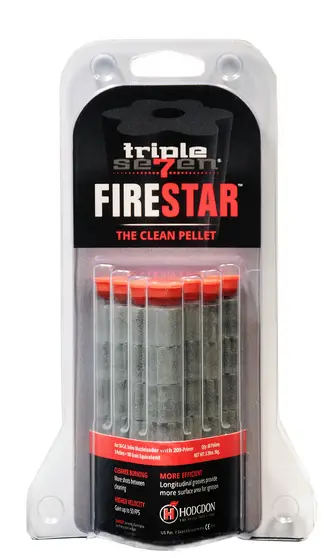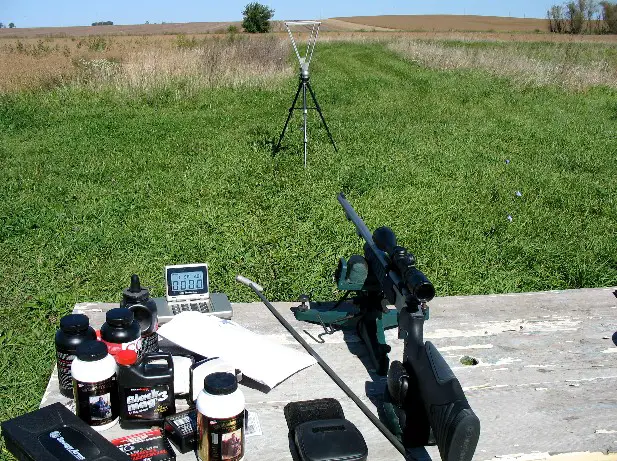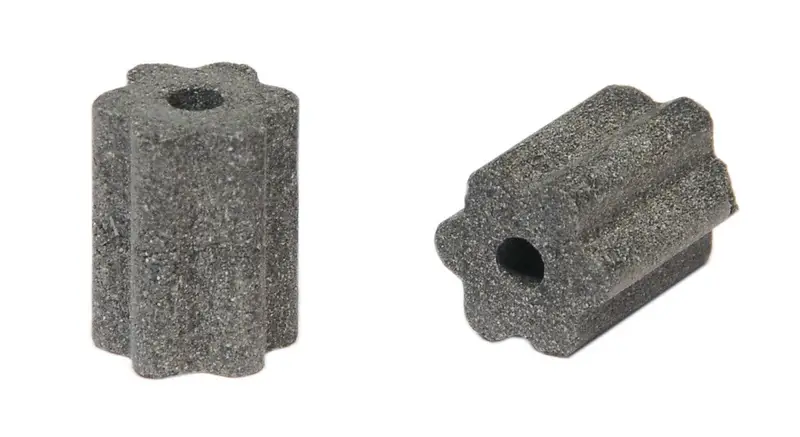Hodgdon
Reinvents the Muzzleloader Pellet: FIRESTAR


It was back in 1996 when G. Dean Barrett filed the patent for “A preformed unitary pellet formed from an appropriate propellant for use in muzzle loading firearms.” Assigned to Hodgdon in March of 1998, it changed the face of muzzleloader hunting for good. By 2003, Hodgdon had applied for patents on sulfur-free propellant compositions, now commonly known as Triple Se7en. Others have tried to copy Hodgdon's pellet ideas, and they have all failed. Some of the more miserable propellant attempts are from American Pioneer and “Shockey's Gold”: truly miserable product with erratic velocities, one that was made even worse with the “Jim Shockey's Gold Super Sticks.”
Going back a bit, "Clean Shot Technologies" had their stuff on the market for a while. It gained a reputation as an aggressive moisture-sucker with fairly low velocities, but had a bit of a following in low-humidity areas for a time. Clean Shot Technologies made the mistake of infringing on Hodgdon's pellet patent. Hodgdon complained about the theft of their intellectual property, the courts agreed, and Clean Shot was no more. It is fair to say that Clean Shot was a fairly peculiar company, with sales offices in Florida, and leased production equipment in Colorado. Hodgdon had to find that out the hard way-- Clean Shot had very little in the way of tangible assets. Re-organized under the name "American Pioneer," CST has gained a very poor reputation in the industry-- but, for better or worse, they came back.
The results with Shockey's Gold were horrifically poor. Though American Pioneer claims a lot of things, including that Shockey's Gold is a "premium grade version" of American Pioneer, the only thing tangible that I have been able to detect is the different label on the bottle. The Shockey's Gold sticks are still clumsily packaged in a bottle with plastic beads, and are irregular in size and shape-- I've had bags of charcoal briquettes with better quality control. Some of the sticks shaved off parts of themselves going down the muzzle of the Encore, some didn't. A casual look at them shows how crudely made they are, with chips, cracks, and other very rough surface irregularities. This is cobby stuff, to be sure.
As for performance with my Pro-Hunter, it was decidedly inconsistent. With the 250 grain Hornady XTP and MMP 3 Petal EZ sabot, a typical three shot string was 1695 fps, 1773 fps, and then 1598 fps through the CED Millennium. This is the same type of low velocity and wild shot to shot deviation I saw with American Pioneer tested previously in a different Encore and a Knight Disc Elite using 300 grain lead saboted bullets, among others.

Hodgdon's new FireStar pellet is an innovative new design, offering far greater surface area, and promising less fouling and higher velocities as a result. Rather than the most common 2 pellets = 100 grain grains equivalent, Firestar pellets are 3 pellets = 100 grains equivalent. This opens up questions about what manufacturers will allow, for the 200 grain capable Remington Ultimate might be able to use six FireStar pellets but it is too early to say. I suspect that most “150 grains of pellets” capable muzzleloaders would be able to use four Firestar pellets (roughly 133 – 135 grain equivalent) with no problems whatsoever.
More of my muzzleloaders shoot well with more loads using two Triple Se7en 50 gr. equivalent pellets than with three. I suspect that more muzzleloaders out there will produce good accuracy with four FireStar pellets than with 150 grains of typical T7 pellets, with a bit less pressure and a bit less sabot stress involved. I'd also suspect that with less fouling, FireStar pellets will be a bit more accurate from shot to shot, due to more consistent bore conditions shot to shot. It will be fun to see how it all works out.
For more information, see https://www.hodgdon.com/ .
Copyright 2017 by Randy Wakeman. All Rights Reserved.













